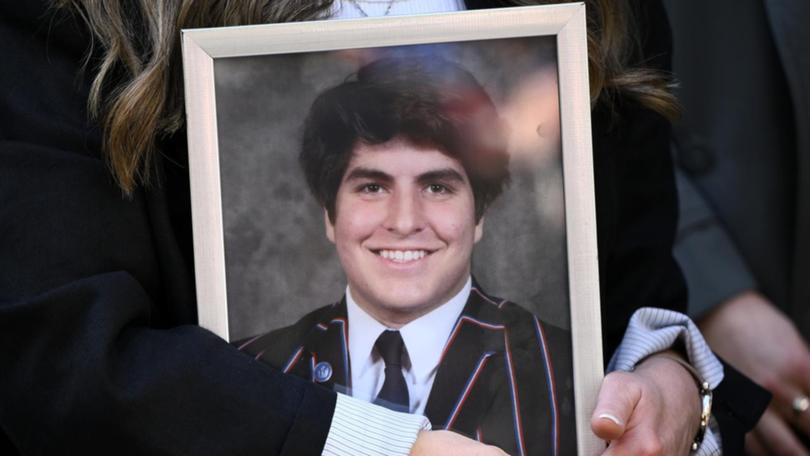James Tsindos: Family calls for food app changes after teen died after eating burrito bowl

The family of a teenager who died from a severe allergic reaction after ordering a meal containing nuts through a food delivery service have called for systemic changes to food apps.
James Tsindos ordered a burrito bowl from a food delivery app on the afternoon of May 27, 2021 after visiting a COVID-19 testing centre with his dad, an inquest was told on Friday.
The 17-year-old had sensitivities to nuts and would usually check ingredients in his food but he didn’t on this occasion.
Sign up to The Nightly's newsletters.
Get the first look at the digital newspaper, curated daily stories and breaking headlines delivered to your inbox.
By continuing you agree to our Terms and Privacy Policy.After experiencing allergy flare-ups while eating the meal, including swollen lips, nausea, tingling in the throat and abdominal cramps, James’ dad called an ambulance while the teen called the restaurant.
It confirmed the burrito bowl contained a vegan cheese sauce made from cashews.
Paramedics arrived at their Brighton home about 2.50pm and assessed James and found no rashes or signs of troubled breathing.
They designated him as a potential anaphylaxis case and administered a dose of adrenaline, which eased his nausea and swelling in his lips.
Paramedic Jonathan Hammond administered a second adrenaline shot five minutes later which further eased the abdominal cramping, tingling in the throat and lip swelling.
James was transferred to the nearby Holmesglen Private Hospital as a precaution, and Mr Hammond observed him during the ambulance trip.
“He appeared comfortable and able to speak in clear sentences about school and interests,” he told the Coroners Court in Melbourne.
As he was being wheeled through the hospital doors, James told the paramedics he was “wheezy” and used his asthma puffer.
He was placed in an isolation room while Mr Hammond engaged in a handover with the nurses, which has been a subject of contention over whether the nurses were told about the wheezing symptom.
“It was one of the first things I (told them) and that’s why the nurse left to get the puffer spacer,” Mr Hammond said.
At 4.10pm he was placed on oxygen therapy and administered with adrenaline and saline but continued pointing to his upper airway signalling trouble breathing.
He was transferred to the resuscitation ward and within a minute became unresponsive before entering cardiac arrest with a rash appearing on his body.
Doctors and nurses spent 40 minutes trying to resuscitate James, longer than what would usually occur given his young age.
“Extensive efforts were made by that team to bring James back - to start his heart again,” counsel assisting Rachel Ellyard said.
After this a request was made for him to be transferred to The Alfred as he was experiencing a widespread rash, collapsed lung and hypoxia.
But James sustained a brain injury from the cardiac arrest and never recovered.
His life support was turned off on June 1.
An inquest into James’ death began on Friday, examining food delivery app systems for allergies, as well as whether the medical care provided to James was appropriate.
Tsindos family lawyer described James as a beautiful 17-year-old who was filled with laughter, joy and hope, and said his family was devastated by his loss.
“They have a lot of questions about what happened, whether his death could have been prevented,” Shari Liby said.
“The Tsindos family are very committed to ensuring that systems are put in place so that no other family suffers a single loss under these kinds of circumstances.”
UberEats rolled out new allergy features in June, including disclaimers that tell consumers if restaurants can accommodate food allergy requests.
Menulog urges customers to contact the restaurant to relay their allergies, while DoorDash users can add in special instructions and restaurants can add an option for allergen requests.
